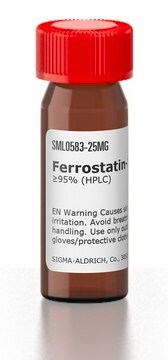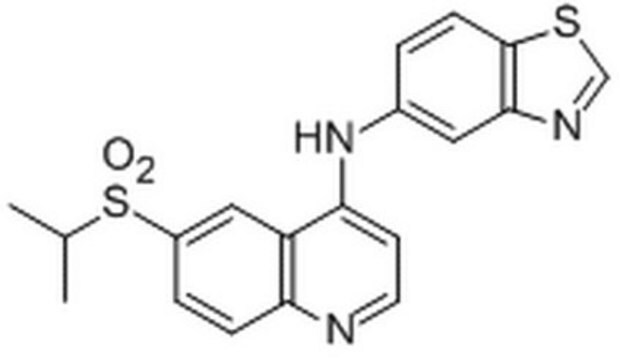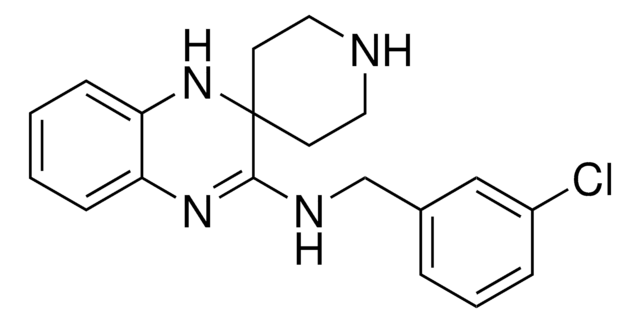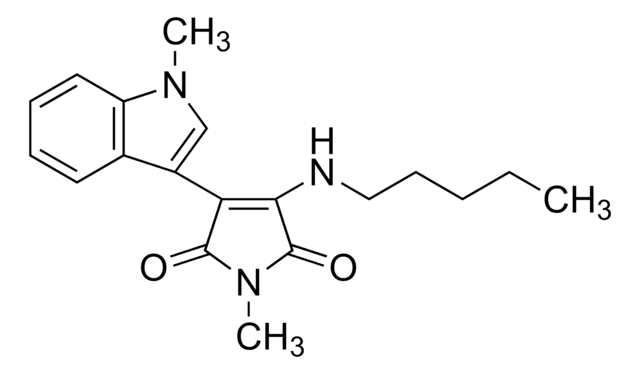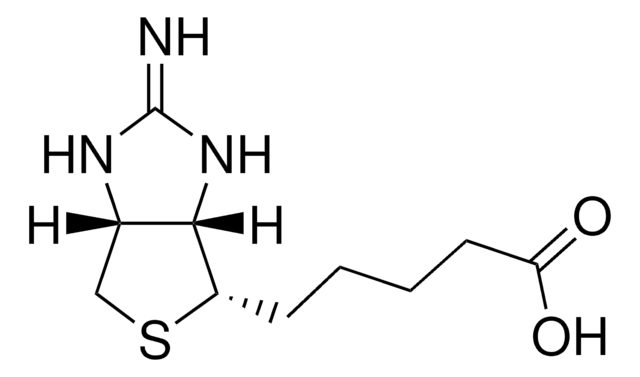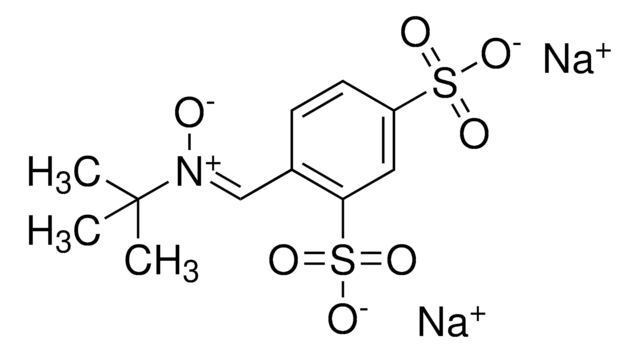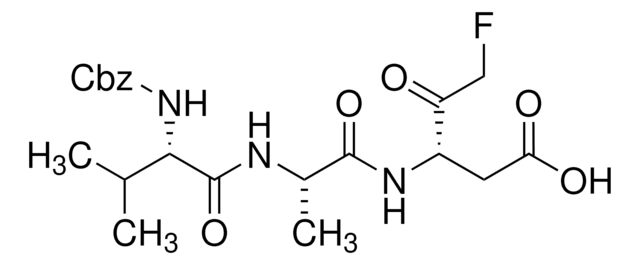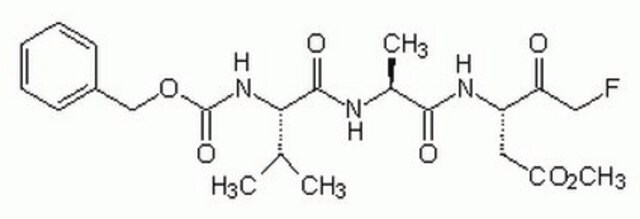N9037
Necrostatin-1
≥98% (HPLC), powder, necroptosis inhibitor
Synonym(e):
5-(1H-Indol-3-ylmethyl)-3-methyl-2-thioxo-4-Imidazolidinone, 5-(Indol-3-ylmethyl)-3-methyl-2-thio-Hydantoin, MTH-DL-Tryptophan
About This Item
Empfohlene Produkte
product name
Necrostatin-1, ≥98% (HPLC)
Qualitätsniveau
Assay
≥98% (HPLC)
Form
powder
Löslichkeit
DMSO: >10 mg/mL
Lagertemp.
−20°C
SMILES String
CN1C(=S)NC(Cc2c[nH]c3ccccc23)C1=O
InChI
1S/C13H13N3OS/c1-16-12(17)11(15-13(16)18)6-8-7-14-10-5-3-2-4-9(8)10/h2-5,7,11,14H,6H2,1H3,(H,15,18)
InChIKey
TXUWMXQFNYDOEZ-UHFFFAOYSA-N
Anwendung
Biochem./physiol. Wirkung
Leistungsmerkmale und Vorteile
Lagerklassenschlüssel
11 - Combustible Solids
WGK
WGK 3
Flammpunkt (°F)
Not applicable
Flammpunkt (°C)
Not applicable
Persönliche Schutzausrüstung
Eyeshields, Gloves, type N95 (US)
Analysenzertifikate (COA)
Suchen Sie nach Analysenzertifikate (COA), indem Sie die Lot-/Chargennummer des Produkts eingeben. Lot- und Chargennummern sind auf dem Produktetikett hinter den Wörtern ‘Lot’ oder ‘Batch’ (Lot oder Charge) zu finden.
Besitzen Sie dieses Produkt bereits?
In der Dokumentenbibliothek finden Sie die Dokumentation zu den Produkten, die Sie kürzlich erworben haben.
Kunden haben sich ebenfalls angesehen
Verwandter Inhalt
n proliferating cells, the cell cycle consists of four phases. Gap 1 (G1) is the interval between mitosis and DNA replication that is characterized by cell growth. Replication of DNA occurs during the synthesis (S) phase, which is followed by a second gap phase (G2) during which growth and preparation for cell division occurs. Together, these three stages comprise the interphase phase of the cell cycle. Interphase is followed by the mitotic (M) phase.
Apoptosis, or programmed cell death (PCD), is a selective process for the removal of unnecessary, infected or transformed cells in various biological systems. As it plays a role in the homeostasis of multicellular organisms, apoptosis is tightly regulated through two principal pathways by a number of regulatory and effector molecules.
Unser Team von Wissenschaftlern verfügt über Erfahrung in allen Forschungsbereichen einschließlich Life Science, Materialwissenschaften, chemischer Synthese, Chromatographie, Analytik und vielen mehr..
Setzen Sie sich mit dem technischen Dienst in Verbindung.